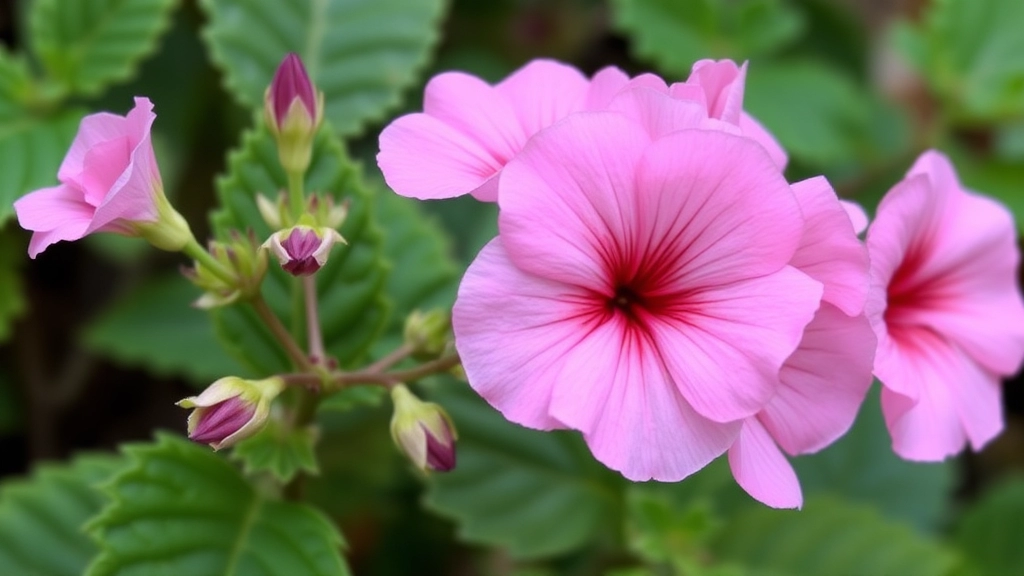Dealing with Kalanchoe Flowers Wilting
Dealing with Kalanchoe flowers wilting can be frustrating, but understanding the root causes makes it easier to revive your plant. The most common culprits include overwatering, underwatering, pest infestations, temperature stress, and diseases like root rot or powdery mildew. Identifying these issues early on is key to restoring your Kalanchoe to its vibrant self.
Signs of Overwatering and Underwatering
Overwatering and underwatering both have distinct signs. Overwatered Kalanchoe often show yellowing leaves and mushy stems, while underwatered plants display dry, brittle leaves.
Pest Infestations and Temperature Extremes
Pest infestations, such as mealybugs and aphids, can also cause wilting, as can temperature extremes. By adjusting watering practices, optimizing environmental conditions, and treating pests and diseases promptly, you can prevent and fix wilting issues effectively.
Common Causes of Kalanchoe Flowers Wilting
Have you ever noticed your Kalanchoe flowers wilting, leaving you puzzled and concerned? You’re not alone. Many plant enthusiasts grapple with this issue, and understanding the common causes can make all the difference in restoring your plant’s health.
Overwatering
One of the primary culprits behind wilting Kalanchoe flowers is overwatering. While Kalanchoe thrives in moist conditions, too much water can suffocate the roots, leading to stress.
- Signs of Overwatering:
- Yellowing leaves
- Soft or mushy stems
- A foul smell from the soil
Underwatering
Conversely, underwatering can also cause wilting. If you forget to water your Kalanchoe, it will show signs of distress.
- Signs of Underwatering:
- Crispy, dry leaves
- Drooping flowers
- Soil pulling away from the pot edges
Temperature Stress
Temperature fluctuations can stress your Kalanchoe, leading to wilting. Extreme cold or heat can shock the plant, causing it to lose vitality.
- Ideal Temperature Range:
- 18°C to 24°C (65°F to 75°F)
Pest Infestations
Pests like mealybugs and aphids can wreak havoc on your Kalanchoe. These pests suck the sap from your plant, leading to wilting and other health issues.
- Signs of Pest Infestation:
- Sticky residue on leaves
- Visible pests on stems and leaves
Fungal Diseases
Fungal infections, such as powdery mildew and Botrytis, can also contribute to wilting. These diseases thrive in humid conditions and can quickly spread if not addressed.
Effects of Overwatering on Kalanchoe Health
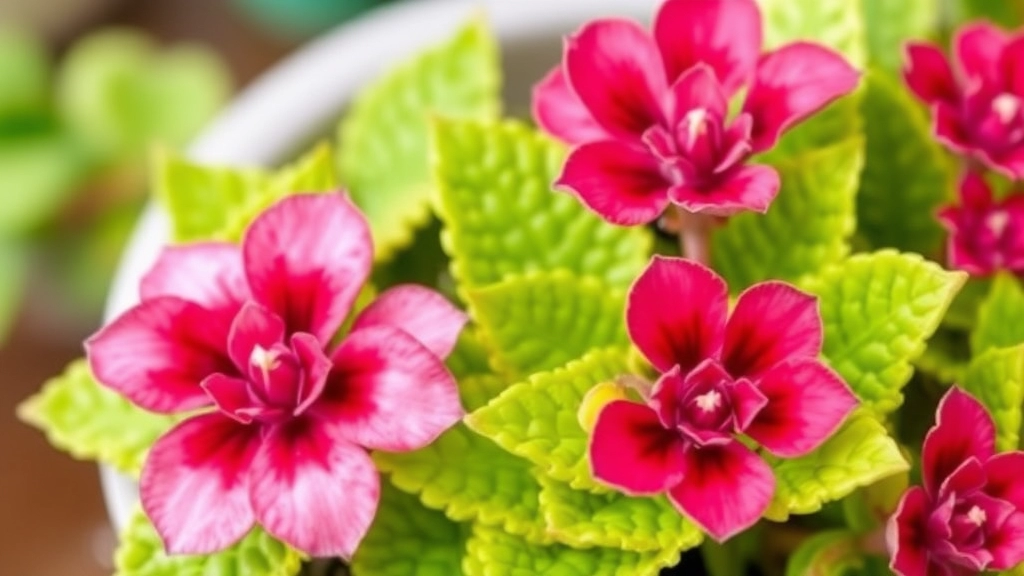
Ever looked at your Kalanchoe and thought, “Why are my flowers drooping?” You might be overwatering, and trust me, it can wreak havoc on your plant’s health.
When it comes to Kalanchoe, these beauties thrive on a careful balance of moisture. Overwatering can lead to a host of issues that can leave your plant looking sad. Here’s what you need to know:
- Root Rot: This is the biggie. Too much water suffocates the roots, leading to rot. If you notice a foul smell when you check the soil, that’s a sure sign.
- Yellowing Leaves: If the leaves start turning yellow and feel mushy, it’s a cry for help. This is often a direct result of sitting in soggy soil.
- Wilting Flowers: Ironically, overwatered plants can still droop. The flowers may wilt, leaving you puzzled. It’s like they’re drowning but can’t quite say it.
- Fungal Diseases: Excess moisture creates a perfect environment for fungi. You might find powdery mildew or other nasty infections taking hold.
So, what can you do if you suspect overwatering?
- Check the Soil: Stick your finger in about an inch deep. If it’s wet, hold off on watering.
- Adjust Your Watering Schedule: Kalanchoe prefers to dry out a bit between waterings. Aim for once every couple of weeks, depending on the season.
- Repot If Necessary: If you find root rot, it might be time for a fresh start. Remove the plant from its pot, trim away the rotten roots, and repot in dry, well-draining soil.
- Improve Drainage: Ensure your pot has drainage holes. You can also mix in some perlite or sand to enhance drainage.
Taking these steps can help your Kalanchoe bounce back from overwatering.
Signs of Underwatering in Kalanchoe
Understanding the signs of underwatering in your Kalanchoe is crucial for maintaining its health and vibrancy. If your plant is showing signs of distress, it may be due to insufficient water.
Identifying and Treating Root Rot
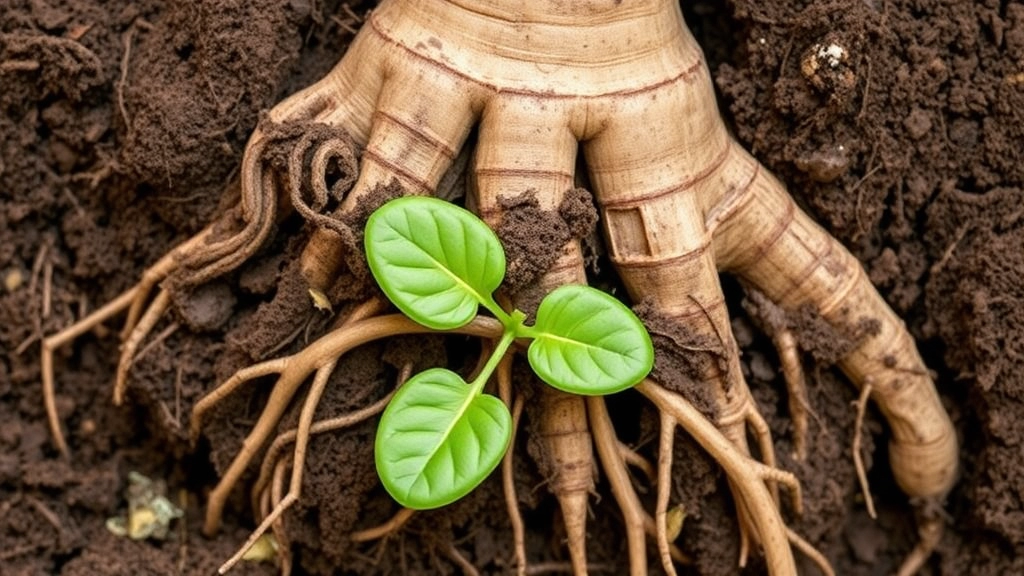
Are your Kalanchoe flowers wilting despite your best care efforts? One of the most common culprits could be root rot.
Root rot occurs when the roots of your Kalanchoe become waterlogged, leading to decay. It’s crucial to identify this issue early to save your plant. Here’s how to spot it and what to do next:
Signs of Root Rot:
- Discolouration: Look for brown or black roots instead of healthy white ones.
- Foul Odour: A musty smell emanating from the soil is a clear indicator.
- Wilting Leaves: Even with adequate watering, wilting can signal root problems.
- Soft Stems: Stems may feel mushy to the touch.
Treatment Steps:
- Remove the Plant: Gently take your Kalanchoe out of its pot.
- Inspect the Roots: Check for any blackened or mushy roots.
- Trim Damaged Roots: Use sterilised scissors to cut away the affected roots.
- Clean the Pot: Disinfect the pot with a diluted bleach solution to eradicate any lingering pathogens.
- Repot in Fresh Soil: Use well-draining potting mix, ideally one designed for succulents.
- Adjust Watering Schedule: Allow the soil to dry out between waterings to prevent recurrence.
Have you noticed your Kalanchoe flowers wilting despite proper care? Pest infestations could be the culprit. Mealybugs and aphids are common pests that can wreak havoc on your beloved plants.
Look for white, cotton-like clusters on the leaves and stems to identify mealybugs. They often hide in the leaf axils or under leaves. Aphids, on the other hand, are small, green or black insects that cluster on new growth. They can cause curling leaves and a sticky residue known as honeydew.
Both pests suck sap from the plant, weakening it. This can lead to wilting flowers and stunted growth. If you’re dealing with such issues, you might find our [how to fix drooping Kalanchoe leaves](https://planthq.org/how-to-fix-drooping-kalanchoe-leaves-causes-and-solutions/) guide helpful.
To treat infestations, isolate the affected plant to prevent spreading. Use a cotton swab dipped in alcohol to remove mealybugs. Spray aphids with a mixture of water and dish soap. For severe cases, consider insecticidal soap or neem oil. For more comprehensive care tips, check out our [ultimate guide to flowering Kalanchoe care](https://planthq.org/ultimate-guide-to-flowering-kalanchoe-care-tips-for-blooming/).
Prevention is key. Regularly inspect your plants for signs of pests, maintain good air circulation, and avoid overcrowding. Keep your Kalanchoe healthy through proper watering and feeding.
How Temperature Stress Affects Kalanchoe
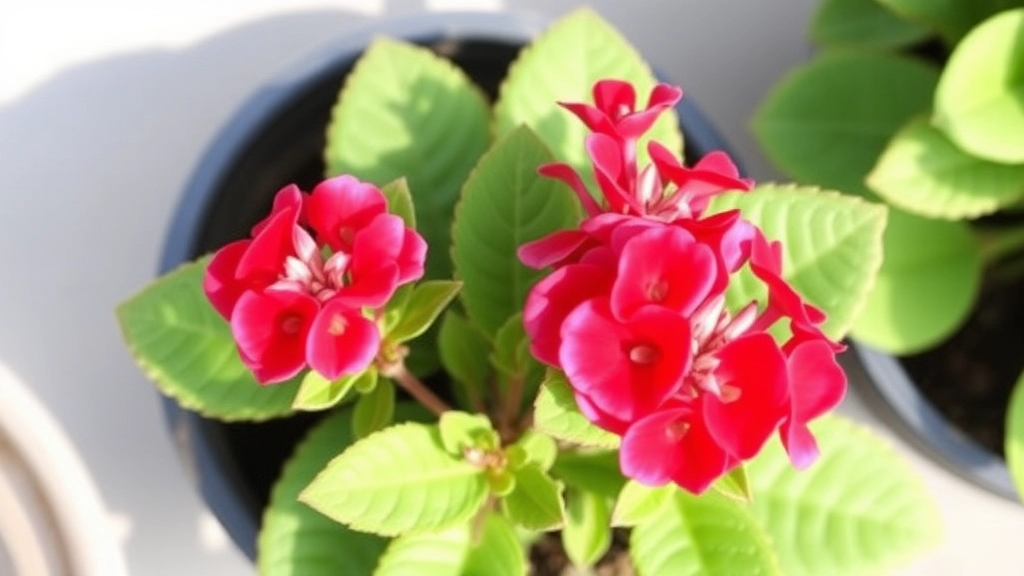
Ever found yourself wondering why your Kalanchoe flowers are drooping or wilting?
Temperature stress might be the sneaky culprit behind those sad blooms.
Kalanchoe plants thrive in specific temperature ranges, and any drastic changes can throw them off balance.
Ideal Temperature Range
- Daytime: 20-25°C (68-77°F)
- Nighttime: 15-18°C (59-65°F)
When temperatures dip below 10°C (50°F) or soar above 30°C (86°F), Kalanchoe can start to suffer.
Signs of Temperature Stress
- Wilting Leaves: A clear sign your plant is not happy.
- Discoloration: Leaves might turn yellow or brown.
- Buds Dropping: If flowers fall off prematurely, it’s time to check the thermostat.
What to Do About It
- Move Indoors: If it’s too cold outside, bring your Kalanchoe indoors.
- Shade It: On scorching days, give your plant a break from direct sun.
- Use a Thermometer: Keep an eye on the temperature around your plant.
Keeping your Kalanchoe in a stable environment is key to healthy blooms.
Light Requirements for Healthy Kalanchoe Blooms
Are your Kalanchoe flowers wilting despite your best care? One common culprit could be inadequate light. Understanding the light requirements for Kalanchoe is crucial for fostering vibrant blooms and healthy growth.
Kalanchoe plants thrive in bright, indirect sunlight. Here’s what you need to keep in mind:
- Ideal Lighting Conditions:
- Place your Kalanchoe near a window where it can receive at least 6 hours of light daily.
- Avoid direct sunlight, as it can scorch the leaves and hinder blooming.
- Signs of Insufficient Light:
- Stretched or leggy growth indicates the plant is reaching for light.
- Leaves may turn yellow and drop off if the light is too low.
- Adjusting Light Exposure:
- If your Kalanchoe shows signs of poor light, move it to a brighter location gradually to avoid shock.
- Consider rotating the plant weekly to ensure even light exposure on all sides.
- Seasonal Adjustments:
- In winter, when days are shorter, you may need to supplement with grow lights.
By ensuring your Kalanchoe receives the right amount of light, you can significantly improve its health and flowering potential. For more detailed guidance, check out our causes and solutions for why your Kalanchoe is not flowering and our Kalanchoe flowering season care guide.
Dealing with Fungal Diseases (Powdery Mildew, Botrytis)
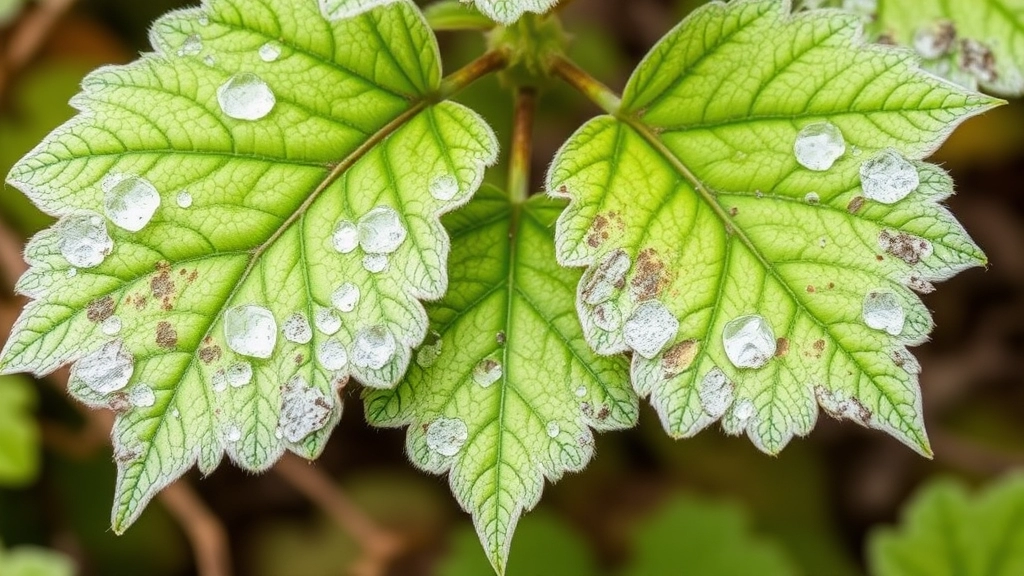
Have you ever noticed white, powdery spots on your Kalanchoe leaves? Or maybe your blooms are looking a bit soggy? These are classic signs of fungal diseases like powdery mildew and Botrytis.
Understanding Fungal Diseases
Fungal diseases can be a real headache for Kalanchoe lovers. They thrive in warm, humid conditions and can quickly take over if not addressed.
Powdery Mildew: The Sneaky Culprit
- Symptoms: White, powdery spots on leaves; distorted growth.
- Causes: High humidity, poor air circulation, and overcrowding.
Botrytis: The Wet Blanket
- Symptoms: Grey, fuzzy mold on flowers and leaves; wilting.
- Causes: Excess moisture, especially in cooler temperatures.
Tackling These Fungal Issues
- Improve Air Circulation:
- Space out your plants to allow airflow.
- Avoid overcrowding.
- Adjust Watering:
- Water in the morning to allow soil to dry out during the day.
- Avoid getting the leaves wet.
- Use Fungicides:
- Look for organic options like neem oil or sulfur-based fungicides.
- Always follow the instructions on the label.
- Remove Affected Parts:
- Prune away any infected leaves or flowers.
- Dispose of them properly to prevent spreading.
- Maintain Humidity Levels:
- Keep humidity low by using a dehumidifier or placing a fan nearby.
- Regular Monitoring:
- Check your plants regularly for early signs of infection.
- Catching it early makes treatment much easier.
By staying vigilant and proactive, you can keep your Kalanchoe healthy and thriving.
Preventing Gray Mold in Kalanchoe
Are your Kalanchoe flowers looking droopy and dull? You might be dealing with gray mold, a common issue that can quickly ruin your beautiful blooms.
Gray mold, scientifically known as Botrytis cinerea, thrives in damp environments and can devastate your Kalanchoe if not addressed swiftly. Here are some effective strategies to prevent this fungal disease:
- Ensure Proper Air Circulation
- Space out your plants to allow for air flow.
- Avoid overcrowding, which can trap moisture.
- Control Humidity Levels
- Keep humidity below 50%.
- Use a dehumidifier or place plants in a well-ventilated area.
- Water Wisely
- Water at the base of the plant, avoiding the leaves.
- Water in the morning so that any excess moisture can evaporate during the day.
- Maintain Cleanliness
- Regularly remove dead leaves and debris from the soil.
- Clean pots and tools to prevent fungal spores from spreading.
- Choose Disease-Resistant Varieties
- Some Kalanchoe varieties are less prone to gray mold. Research before purchasing.
- Monitor for Early Signs
- Keep an eye out for soft, brown spots on leaves.
- Act quickly if you notice any symptoms.
By implementing these preventive measures, you can significantly reduce the risk of gray mold invading your Kalanchoe. For more information on maintaining healthy Kalanchoe plants, check out our expert care tips and our post-blooming care guide.
Proper Watering Techniques for Kalanchoe
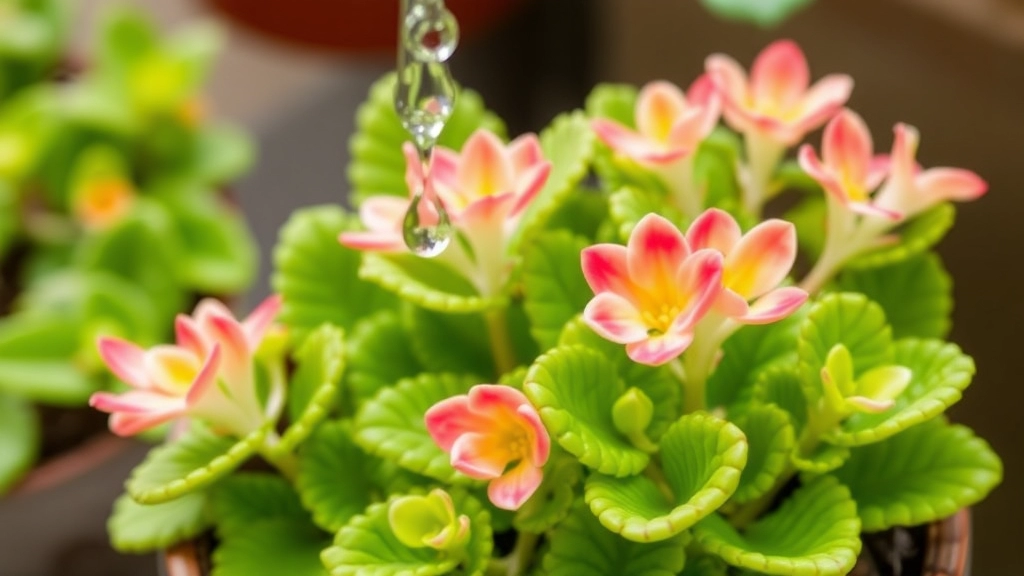
Are your Kalanchoe flowers wilting despite your best efforts? You’re not alone! One of the most common culprits behind this issue is improper watering. Let’s dive into some straightforward watering techniques that can keep your Kalanchoe thriving.
Understanding Kalanchoe’s Needs
Kalanchoe is a succulent, which means it has specific watering needs that differ from other houseplants.
- Check the Soil: Always feel the top inch of the soil. If it’s dry, it’s time to water.
- Water Deeply: When you do water, soak the soil thoroughly until water drains from the bottom. This encourages strong root growth.
- Frequency Matters: Generally, watering every 2-3 weeks is sufficient, but adjust based on your environment.
Signs You’re Over or Underwatering
- Overwatering: Yellow leaves, mushy stems, or a sour smell from the soil.
- Underwatering: Wrinkled leaves, dry tips, or a general droopiness.
Tips for Success
- Use Well-Draining Soil: A mix specifically for succulents works wonders.
- Choose the Right Pot: Ensure your pot has drainage holes to prevent waterlogging.
- Water in the Morning: This helps the plant absorb moisture before the heat of the day.
Best Soil and Drainage Practices for Kalanchoe
Are you struggling with your Kalanchoe plants wilting despite your best efforts? One of the often-overlooked factors could be the soil and drainage conditions.
Choosing the Right Soil
Kalanchoe thrives in well-draining soil. Here are some key points to consider:
- Cactus or Succulent Mix: Opt for a commercial cactus or succulent soil mix. These blends are designed to allow excess water to drain quickly.
- DIY Soil Mix: If you prefer a homemade mix, combine:
- 50% potting soil
- 25% perlite or pumice
- 25% coarse sand
This combination ensures aeration and prevents water retention.
Ensuring Proper Drainage
Even the best soil can lead to problems if drainage isn’t adequately addressed. Here’s how to ensure your Kalanchoe has the right drainage:
- Pot Selection: Use pots with drainage holes. Terracotta pots are excellent as they allow moisture to evaporate.
- Layering: Place a layer of small stones or gravel at the bottom of the pot before adding soil. This helps to facilitate drainage.
- Avoid Saucers: If using saucers, ensure they are emptied regularly to prevent standing water.
Monitoring Soil Moisture
Regularly check the moisture level of the soil. Here’s a quick guide:
- Touch Test: Stick your finger into the soil up to the second knuckle. If it feels dry, it’s time to water.
- Soil Moisture Meter: Consider investing in a soil moisture meter for precise readings.
For more information on how to ensure your Kalanchoe thrives, check out our Best Soil for Kalanchoe Blossfeldiana Care Tips and our Ultimate Guide to Caring for Kalanchoe Succulents.
Long-Term Care Tips to Avoid Wilting Kalanchoe
Have you ever watched your beautiful Kalanchoe flowers droop and wilt? It’s a heart-wrenching sight, isn’t it?
But don’t worry, I’ve got some solid long-term care tips that can help keep your Kalanchoe vibrant and happy.
Consistent Watering Schedule
- Check the Soil: Always feel the soil before watering. If the top inch is dry, it’s time for a drink.
- Watering Frequency: Aim for every 1-2 weeks, depending on the season. Less in winter, more in summer.
Optimal Light Exposure
- Bright Indirect Light: Place your Kalanchoe where it can soak up bright, indirect sunlight. Too much direct sun can scorch those gorgeous leaves.
- Rotate Regularly: Give all sides equal sun exposure by rotating the pot every few weeks.
Soil and Drainage
- Well-Draining Soil: Use a cactus or succulent mix to help prevent waterlogging.
- Proper Pot: Ensure your pot has drainage holes. This is key to avoiding root rot.
Fertilisation
- Balanced Fertiliser: Feed your Kalanchoe with a balanced, water-soluble fertiliser every month during the growing season.
- Dilute It: Always dilute the fertiliser to half-strength to avoid burning the roots.
Temperature Management
- Ideal Range: Keep your Kalanchoe in a warm space, ideally between 18-24°C.
- Avoid Drafts: Keep it away from cold drafts and sudden temperature changes.
Pest Prevention
- Regular Checks: Inspect your plant regularly for pests like mealybugs and aphids. Catching them early makes a world of difference.
- Natural Remedies: Use neem oil or insecticidal soap if you spot any unwelcome guests.
Humidity Control
- Moderate Humidity: Kalanchoe prefers moderate humidity. If your home is too dry, consider using a pebble tray with water.
Pruning and Maintenance
- Deadheading: Remove wilted flowers to encourage new blooms.
- Leaf Care: Wipe leaves gently with a damp cloth to remove dust and keep them healthy.
For more detailed guidance on specific Kalanchoe varieties, check out our Kalanchoe Mother of Thousands Care Guide and learn how to make your Kalanchoe flower again.
FAQs about Kalanchoe Flowers Wilting
Why are my Kalanchoe flowers wilting?
Wilting flowers on your Kalanchoe can be due to several reasons, including overwatering, root rot, temperature stress, or fungal diseases. It’s important to identify the cause to take appropriate action.
How does overwatering affect Kalanchoe plants?
Overwatering can lead to root rot, yellowing leaves, wilting flowers, and fungal diseases. Always ensure the soil is dry before watering again.
What are the signs of root rot in Kalanchoe?
Signs of root rot include discolored roots (brown or black), a foul odor from the soil, wilting leaves, and mushy stems. Early detection is crucial for treatment.
How can I treat root rot in my Kalanchoe?
To treat root rot, remove the plant from its pot, trim away the affected roots, disinfect the pot, and repot in fresh, well-draining soil. Adjust your watering schedule to prevent recurrence.
What is the ideal temperature range for Kalanchoe?
Kalanchoe plants thrive in daytime temperatures of 20-25°C (68-77°F) and nighttime temperatures of 15-18°C (59-65°F). Avoid exposing them to temperatures below 10°C (50°F) or above 30°C (86°F).
How can I prevent fungal diseases in my Kalanchoe?
Prevent fungal diseases by improving air circulation, adjusting watering practices, using organic fungicides, removing affected parts, maintaining low humidity levels, and monitoring your plants regularly.
What are the symptoms of powdery mildew and Botrytis in Kalanchoe?
Powdery mildew appears as white, powdery spots on leaves and can cause distorted growth. Botrytis manifests as grey, fuzzy mold on flowers and leaves, often leading to wilting.
How often should I water my Kalanchoe?
Water your Kalanchoe every 2-3 weeks, but always check the top inch of soil. If it’s dry, it’s time to water. Adjust the frequency based on your environment.
What are the signs of overwatering and underwatering in Kalanchoe?
Overwatering signs include yellow leaves, mushy stems, and a sour smell from the soil. Underwatering signs include wrinkled leaves, dry tips, and general droopiness.
What type of soil and pot should I use for my Kalanchoe?
Use well-draining soil, preferably a mix designed for succulents. Ensure your pot has drainage holes to prevent waterlogging.
References
-
Overwatering Kalanchoe: Symptoms and Solutions
-
Kalanchoe Care Guide: Common Problems and Solutions
-
The Old Farmer’s Almanac: Kalanchoe Plant Care
